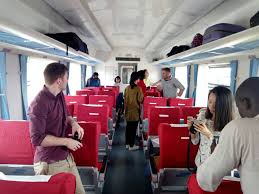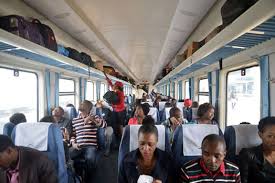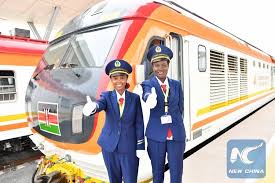The Standard Gauge Railway (SGR) in Kenya has been a game-changer in the country’s transportation sector since its launch in 2017. Offering a faster, safer, and more affordable travel option between Nairobi and Mombasa, the SGR quickly became a preferred mode of transport. However, in recent times, there has been a noticeable decline in the number of passengers using the service. This article will explore the potential reasons for this decline and propose solutions to reverse the trend.
1. Increased Competition from Other Transport Modes
Problem: Over the years, competition from alternative transport options like low-cost buses, budget airlines, and personal vehicles has intensified. These modes of transportation, especially buses, often provide flexibility in terms of travel schedules and are available on routes not covered by the SGR.

Suggested Solution:
To compete with these options, Kenya Railways could:
- Increase the frequency of SGR trips to cater to passengers who prefer more flexible travel times.
- Expand routes to other major towns or cities beyond the Nairobi-Mombasa corridor. This would cater to a wider population and diversify its customer base.
- Offer dynamic pricing, providing discounts during non-peak hours or for group bookings to attract more passengers.
2. Pricing Concerns
Problem: While the SGR remains an affordable option compared to air travel, some passengers still find it more expensive than buses. Additionally, the cost of transport from the railway stations to final destinations in Nairobi or Mombasa adds to the total expense, making the overall trip less competitive.
Suggested Solution:
- Introduce special pricing packages targeting different customer groups, such as students, frequent travelers, and families. Loyalty programs could also encourage repeat travel.
- Integrate transport systems by partnering with public transport providers for seamless last-mile connectivity from the SGR stations to the city centers. This would reduce the cost and hassle of transferring from the station to final destinations.

3. Inconvenient Station Locations
Problem: Both the Nairobi and Mombasa SGR stations are located outside the city centers, which poses a challenge for passengers, especially those without private cars. The additional cost and time of getting to and from these stations can deter travelers from using the SGR.
Suggested Solution:
- Invest in shuttle services: Establishing reliable and affordable shuttle services that connect major urban centers to SGR stations would help ease this problem.
- Collaborate with ride-hailing companies: Offering discounted rides or pre-arranged pickups could make traveling to and from SGR stations more convenient.
4. Lack of Awareness and Promotion
Problem: Some potential passengers may not be fully aware of the SGR’s benefits, special offers, or schedule. A lack of consistent marketing efforts can reduce interest over time.
Suggested Solution:
- Increase marketing efforts: Utilize digital platforms, social media, and traditional advertising to raise awareness of the SGR’s affordability, safety, and reliability. Highlight promotions and deals to attract new users.
- Collaborate with travel agencies: Offering package deals that include SGR tickets, hotels, and tours can appeal to both local and international tourists, especially during the high tourism seasons.

5. Operational Challenges and Service Quality
Problem: Passengers may be discouraged by occasional service interruptions, delays, or inconsistent customer service, which can lead to dissatisfaction and a negative public perception.
Suggested Solution:
- Improve customer service: Implement regular staff training programs to ensure a consistently high standard of service. Additionally, Kenya Railways can introduce a feedback system to address passenger complaints and improve the experience.
- Enhance operational efficiency: Invest in maintenance and operational technology to ensure smoother operations and fewer delays. Providing real-time updates to passengers in case of delays would also enhance customer satisfaction.
6. Pandemic-Related Impact
Problem: The COVID-19 pandemic led to significant travel restrictions and changes in travel behavior, with many people still hesitant to use public transport due to health concerns.
Suggested Solution:
- Ensure health and safety measures: Continue enforcing strict health protocols such as regular sanitization, mandatory masking, and social distancing on trains to build passenger confidence.
- Leverage digital bookings: Promote contactless ticketing and check-in processes through mobile apps to limit physical interaction and reduce wait times.
7. Environmental Concerns and Sustainability
Problem: As global awareness of environmental issues grows, some passengers might be drawn to more eco-friendly travel options. While rail travel is considered relatively green, Kenya’s SGR could do more to communicate its environmental benefits.
Suggested Solution:
- Promote the environmental benefits of rail travel: Marketing campaigns could focus on the SGR’s lower carbon footprint compared to road and air transport. Highlighting sustainability efforts would resonate with environmentally-conscious travelers.
- Adopt green initiatives: Introducing solar energy at SGR stations and using renewable energy sources to power train operations could further enhance the service’s green credentials.




